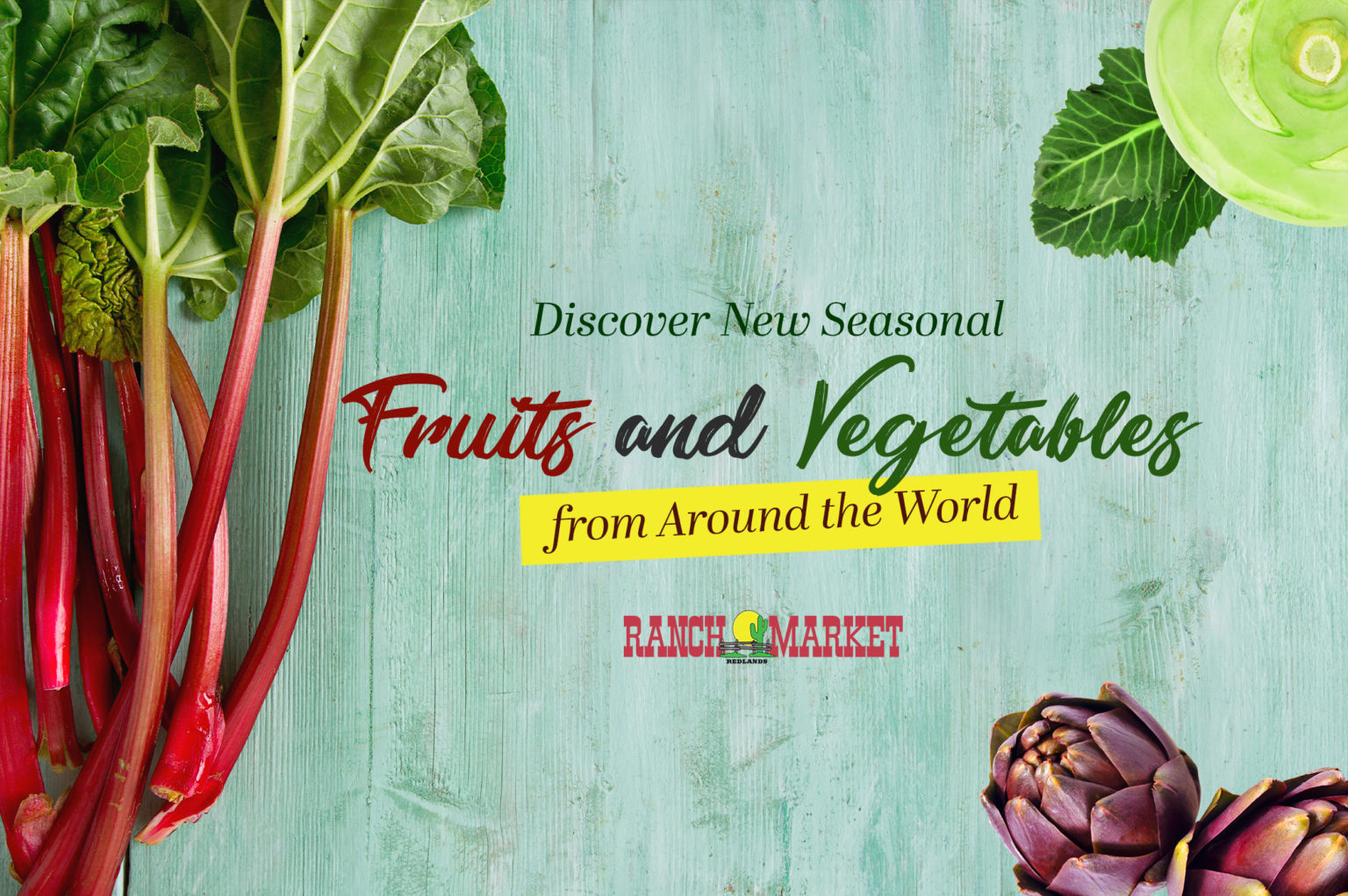Overview: It’s always a good time to try new foods, including delicious fruits and vegetables. When spring arrives, it brings with it a cornucopia of exciting seasonal produce from around the world. Read on to hear about some of our favorites!
As the winter months come to an end, fresh produce becomes more abundant. Along with warmer weather, spring brings new fruits and vegetables to the table. While many of us are familiar with traditional spring produce such as asparagus, peas, and strawberries, there are also many lesser-known fruits and vegetables from around the world that are in season during the spring months.
Spring is a great time to discover new produce and experiment with unique flavors and ingredients. Whether you’re a seasoned chef or a novice in the kitchen, incorporating some of these lesser-known fruits and vegetables can add variety and nutrition to your meals. Try using them in different recipes and with cooking methods to find your favorite ways to enjoy them.
In this blog post, we’ll be exploring some unique and flavorful produce options that are in season in springtime!
Fava Beans
Fava beans, also known as “broad beans,” are a staple of Mediterranean and Middle Eastern cuisine. They have a creamy texture and a slightly nutty flavor that pairs well with herbs and spices. Fava beans are a good source of protein, fiber, and iron, making them a nutritious addition to any meal.
As a seasonal food, fava beans are typically in season starting in late March and continuing through early summer, depending on the region and climate in which they’re grown.
To prepare fava beans, simply shell the beans from their pods and blanch them in boiling water for a few minutes before removing their outer skins. If you want to take a cue from Hannibal Lecter, you could serve them with a nice Chianti!
Rhubarb
“Rhubarb” is fun to say, but what is it? It’s a tart and tangy vegetable that is often used in sweet desserts such as pies and crumbles. It has bright red stalks and large green leaves, but only the stalks are edible. Rhubarb is a good source of vitamin C, calcium, and potassium.
Rhubarb is native to Siberia and northern China, and it has been cultivated in Europe since the 1600s. Today, rhubarb is grown in many countries, including the United States, Canada, the United Kingdom, Germany, and China. It’s truly an international vegetable.
Rhubarb is typically in season starting in early springtime, in March or early April, and continuing through June, To prepare rhubarb, simply cut off the ends and any brown spots, then chop the stalks into small pieces. Then you can dip it in honey for a sweet treat, combine it with other vegetables and season — or even bake it into a pie!
>> Related Reading: 8 Ways to Eat Rhubarb
Ramps
Don’t try to launch your skateboard off these ramps! Ramps, also known as wild leeks, are a type of onion that grows in the eastern United States and Canada. They have a strong, garlicky flavor and are often used in pesto sauces, soups, and omelets. Ramps are a good source of vitamins A and C.
You’ll find that ramps are in season throughout the spring months, starting in late March or early April and continuing through May or early June. Unlike many of the other types of seasonal produce on this list, ramps are often foraged from the wild rather than cultivated.
To prepare ramps, simply wash them thoroughly and chop off the roots and any wilted leaves.
Kohlrabi
Kohlrabi is a member of the cabbage family and has a crisp, crunchy texture and a slightly sweet, nutty flavor. It can be eaten raw or cooked and is often used in salads, slaws, and stir-fries. Kohlrabi is a good source of fiber, vitamin C, and potassium.
Kohlrabi occupies a special place on this springtime produce list in that it’s typically in season during the cooler months of the year. In many regions, kohlrabi is planted in early spring and harvested in late spring or early summer. In other regions, kohlrabi may be planted in the fall and harvested in late fall or early winter. You can ask the grocers at your local produce market (like Redlands Ranch Market, for example!) when they carry kohlrabi.
To prepare kohlrabi, simply peel off the tough outer layer and slice or chop the flesh. There are many ways you can cook and serve kohlrabi. You can boil it, steam it, roast it, mash it like potatoes — even make fries out of it!
Cherimoya
Have you heard of this one? Cherimoya is a tropical fruit native to South America that has a creamy, custard-like texture and a sweet, fruity flavor. It is often eaten raw and is a good source of vitamin C, potassium, and fiber.
Cherimoya is also grown in other parts of the world, including Mexico, Spain, and Israel. The cherimoya season generally starts in the late fall and winter months and extends through spring, running from November to April.
To prepare cherimoya, simply cut it in half and scoop out the flesh with a spoon, removing the seeds. Enjoy!
>> Related Reading: Health benefits of cherimoya
Watercress
Watercress is a leafy green vegetable that grows in running water and has a peppery, slightly bitter flavor. Watercress is native to European and Asian countries, and it is usually planted in early spring and harvested in late spring or early summer.
It is often used in salads and sandwiches and is a good source of vitamin C, iron, and calcium. To prepare watercress, simply wash it thoroughly and remove any tough stems.
Artichokes
Artichokes are a thistle-like vegetable with a meaty texture and a slightly sweet, nutty flavor. They’re usually harvested throughout the spring, from March to June, and they’re often used in dips, salads, and pasta dishes and are a good source of fiber, vitamin C, and antioxidants.
You’ve probably seen artichokes in your local produce department many times, so you might not think of them as international produce — but in fact, they’re native to the Mediterranean region, and today they’re also grown in Italy, Spain, France, and Argentina.
To prepare artichokes, simply cut off the top of the artichoke and trim the stems, then boil or steam them until tender.
>> Related Reading: 22 artichoke recipes that go beyond spinach dip
Make Your Own Spring Produce Discoveries
In addition to the fruits and vegetables mentioned above, there are many other seasonal options from around the world to discover during the spring months. Some other options include morel mushrooms, radishes, and spring onions. By exploring new ingredients and flavors, you can expand your culinary horizons and enjoy the benefits of a varied and nutritious diet!
In Summary
Discovering new produce in the spring can be a fun and exciting way to incorporate fresh and healthy ingredients into your meals. By trying new fruits and vegetables, you can add variety and flavor to your diet while reaping the health benefits of nutrient-dense foods.
For adventurous fruit and vegetable lovers in Southern California, Redlands Ranch Market is the perfect place to shop for international produce — from spring to summer to winter to fall! Our selection is as varied as it is legendary. Browse the rest of our website to learn more, and please contact us to inquire about specific items or to make requests! We hope to see you soon!


